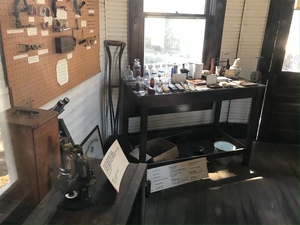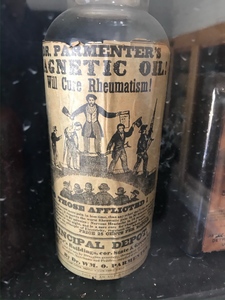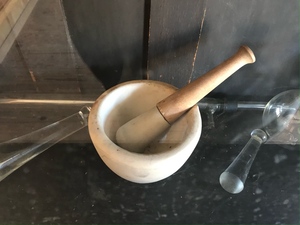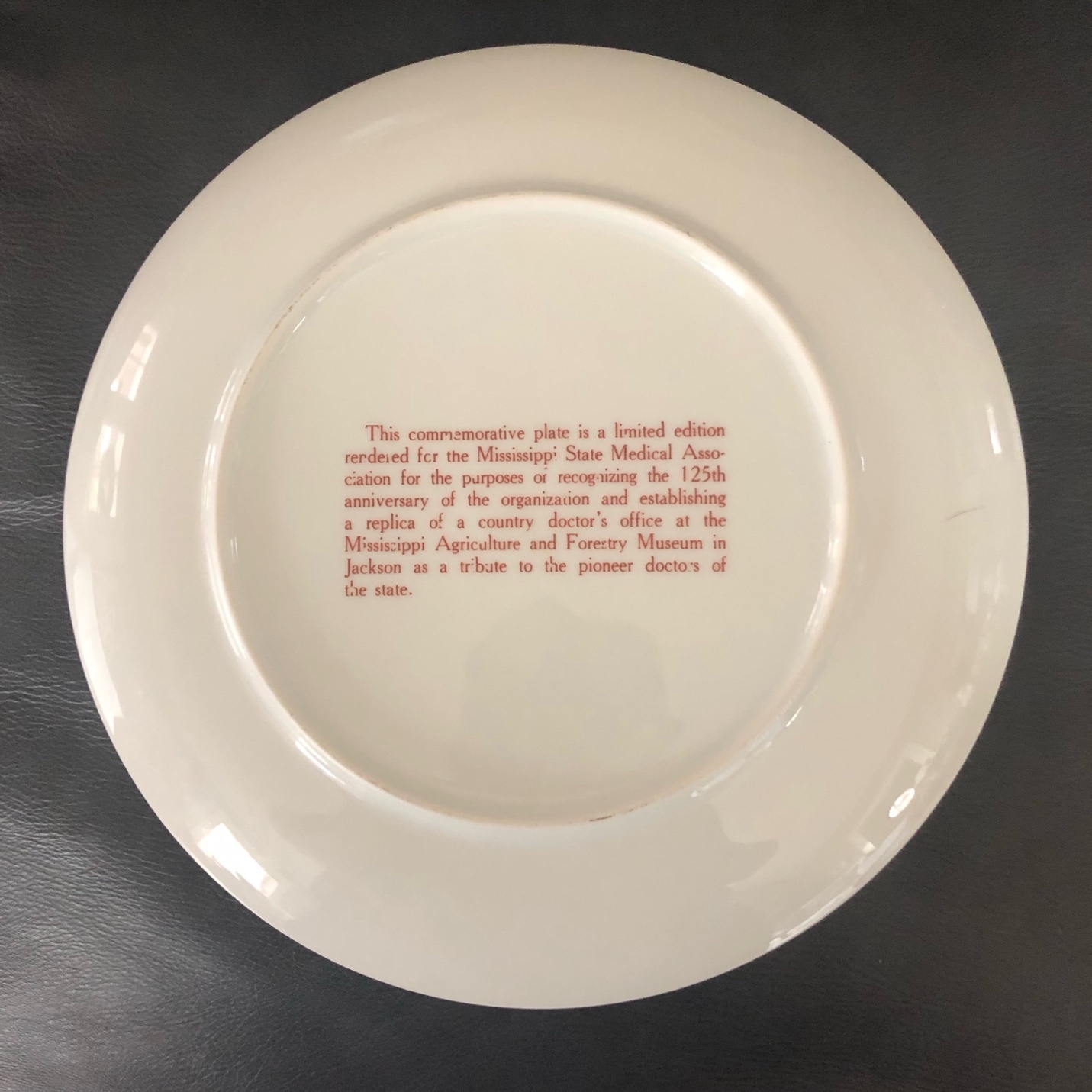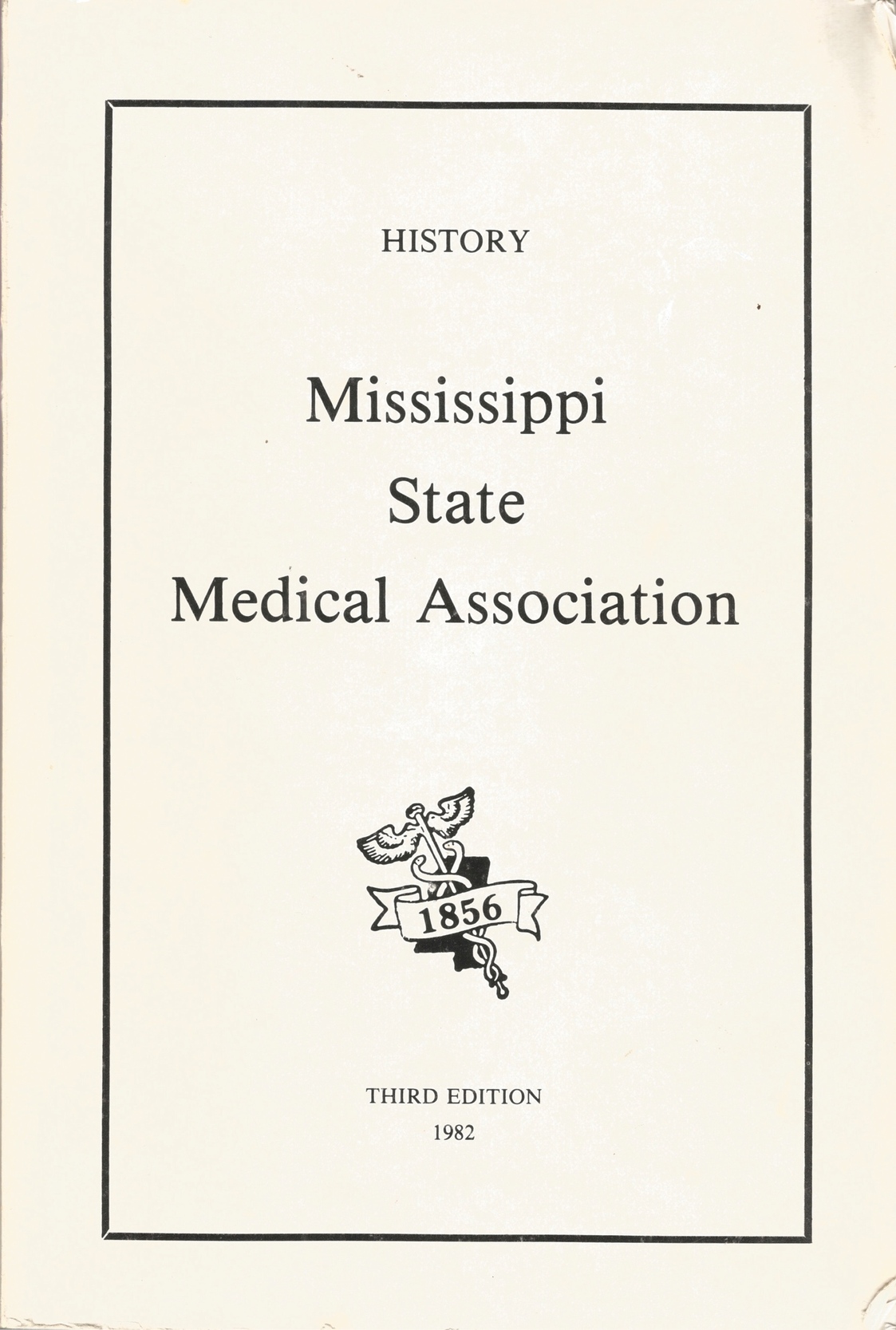This limited edition commemorative plate was rendered for the Mississippi State Medical Association (MSMA) in 1981 as part of its celebration and recognition of the 125th anniversary of its organization. It features on the front the founder of the Association, Dr. W. Y. Gadberry, the first President in 1856, and the ancient medical symbol, a caduceus, with the time period 1856-1981 (125 years) underneath. Above these features is the seal of the MSMA Auxiliary (today’s Alliance), one of the sponsors of the commemoration. In the center of the seal is a small caduceus within a torch, traditionally a symbol of enlightenment and the symbol of the Auxiliary, then and now. The plate also depicts a sketch of the proposed “country doctor’s office” at the Mississippi Agriculture and Forestry Museum in Jackson, which the MSMA was going to endow as a tribute to the pioneer doctors of the state. The proceeds from the sale of the plate went to raise funding for building this replica of a country doctor’s office. The plate captures in images the association’s significant work to celebrate the 125th anniversary of its founding as well as its critical sponsoring of the medical aspect of Commissioner of Agriculture Jim Buck Ross’s visionary Agricultural and Forestry Museum, which was opened in 1983.1
Plans for the 125th Anniversary were announced in the September 1981 MSMA Journal: "A committee composed of past presidents of the association and MSMA Auxiliary representatives is moving ahead with plans to recognize and commemorate MSMA’s 125th Anniversary Year which will begin on December 15, 1981. Tentative planning at this time calls for the December Journal MSMA to be published as an official anniversary issue containing articles about medical organization and activities in the state. Articles have been solicited from the association’s component societies, the auxiliary, the University of Mississippi School of Medicine, and the Mississippi State Board of Health. Additionally, there will be other articles and pictures noting significant medical events in the state.
“The association’s Board of Trustees plans to conduct its regular fall meeting on December 15, 1981 and events are being planned to recognize the association’s birthday at that time. Additionally, planning is in progress at this time to participate in the development and location of a ‘country doctor’s office’ at the Mississippi Agricultural and Industrial Museum being constructed in Jackson. Next year’s annual session is also being considered as a 125th Anniversary meeting with a history of medicine exhibit solicited from the membership and other planned events to recognize and celebrate the occasion.”2
Although the Staff of Asclepius is a rod entwined with one snake only and has no wings, it is the first symbol of medicine (and the most appropriate historically); the popular caduceus, a short staff which features two serpents entwined surmounted by wings, is commonly used by healthcare organizations, especially military organizations, to represent our profession. The caduceus is the staff carried by the messenger-god Hermes in Greek mythology and Mercury in Roman mythology. It was asserted that the wand would wake the sleeping and send the awake to sleep, and if applied to the dying, their death was gentle (a good death), and if applied to the dead, they returned to life. The caduceus was adopted by the U. S. Medical Corps in 1902 as its insignia.3
The 40,000-square-foot Mississippi Agriculture and Forestry Museum opened at 1150 Lakeland Drive on September 20, 1983. Groundbreaking ceremonies were held in December 1981 for the country doctor’s office, which was the first building constructed in an authentic small town, circa 1920, built outside of the main museum.4 A contemporary newspaper article praised the “doctor’s office designed with a bay window at the building’s rear where the examining room is” built next door to the general store and across the street from a gasoline station advertising the price of the fuel as 15 cents a gallon.5
Not only did the MSMA fund the construction of the replica office, but led the effort to find original donations of period medical equipment, pharmaceutical bottles and supplies, and furniture. Its bone saw, bone cutter, tissue retractor, clamp, curette, packing devices, sterilizing pan, medical bottles, and obstetrical medical bag were donated by Dr. S. Lamar Bailey of Kosciusko. The tongue depressor, vaginal speculum, hemorrhoid clamp, scissors, Monikan clamp, nasal speculum, adenoid remover forceps, and tonsil snare were donated by the Crawford Doctors’ Clinic of Tylertown. The MSMA Auxiliary donated obstetrical forceps and a Dr. Tichenor’s Antiseptic Bottle, and Dr. Carl Douglas of Madison donated a porcelain sterilizing pan and a bottle of Quinn’s Tincture of Iodine. A mortar and pestle were contributed by W. S. Brewster in Laurel. An alcohol lamp, glass slides, centrifuge, and haemacytometer were donated by Dr. J. W. Melvin of Camden. An irrigator and refill container was donated by Dr. Richard L. George of Columbus. A wooden exam table was donated by Dr. M. L. Roby of Natchez. A probe was donated by Dr. Howard Clark of Morton. The doctor’s office replica remains an impressive exhibit at the popular Ag Museum on Lakeland Drive, but few remember that our MSMA and its 125th anniversary were the essential inspiration for its creation.
In addition to the commemorative plate and support for the doctor’s office replica, a third edition of the History of the Mississippi State Medical Association was published in May 1982, updating the 1949 edition, covering the period 1950-1981. This volume remains a significant contribution to medical history in our state. In that paperback book’s preface was written: “This third edition of the History of the Mississippi State Medical Association has been compiled by the MSMA staff by direction of the Board of Trustees and in recognition of the 125th Anniversary Year of the association, which occurred on December 15, 1981.”6
If you have an old or even somewhat recent photograph which would be of interest to Mississippi physicians, please send it to me at drluciuslampton@gmail.com or by snail mail to the Journal. — Lucius M. “Luke” Lampton, MD; JMSMA Editor




